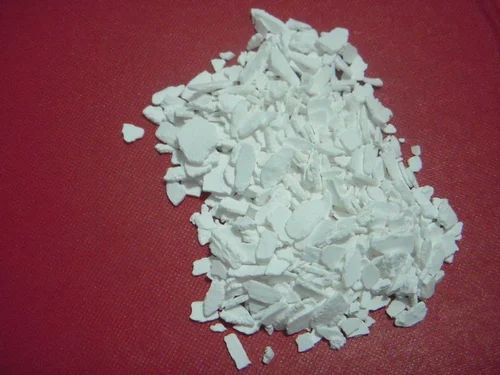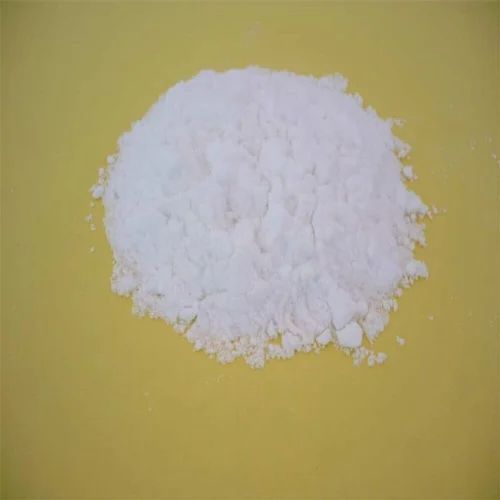Calcium Chloride Dihydrate: The Ultimate Guide
Calcium chloride dihydrate, with the chemical formula CaCl2⋅2H2OCaCl_2 \cdot 2H_2O, is a highly soluble, hygroscopic salt commonly used in various industrial and commercial applications. This compound is notable for its ability to absorb moisture from the environment, making it an essential ingredient in many processes. This comprehensive product description will explore the properties, applications, benefits, and safety measures associated with calcium chloride dihydrate, emphasizing its significance across multiple sectors.
Chemical Properties
Composition and Structure
Calcium chloride dihydrate consists of calcium (Ca), chlorine (Cl), and water (H₂O) molecules. The dihydrate designation indicates that each formula unit contains two water molecules, which contribute to its hygroscopic nature. The molecular weight of calcium chloride dihydrate is approximately 147.02 g/mol.
Physical Characteristics
- Appearance: White crystalline solid
- Molecular Weight: 147.02 g/mol
- Solubility: Highly soluble in water; dissolves exothermically
- Melting Point: 30 °C (86 °F), decomposing at higher temperatures
- Density: Approximately 1.6 g/cm³
These physical properties make calcium chloride dihydrate suitable for a wide range of applications in various industries.
Applications of Calcium Chloride Dihydrate
1. Deicing and Snow Melting
One of the most common uses of calcium chloride dihydrate is as a deicing agent. It is widely employed for melting snow and ice on roads, sidewalks, and parking lots due to its ability to lower the freezing point of water. Calcium chloride dihydrate is effective in colder temperatures than sodium chloride (rock salt), making it a preferred choice for winter maintenance.
2. Dust Control
In construction and mining industries, calcium chloride dihydrate is utilized for dust control. When applied to unpaved roads and construction sites, it attracts moisture from the air, keeping surfaces damp and minimizing dust generation. This helps improve air quality and safety for workers and nearby communities.
3. Food Preservation
Calcium chloride dihydrate is used in the food industry as a firming agent and preservative. It is commonly added to canned vegetables and fruits to maintain their texture and crispness. Additionally, it is used in cheese production to improve the curd’s firmness and overall quality.
4. Chemical Manufacturing
In the chemical industry, calcium chloride dihydrate serves as a key ingredient in various chemical reactions and processes. It is used in the production of calcium salts, such as calcium carbonate and calcium hypochlorite. Its hygroscopic nature also makes it useful for drying organic solvents and gases.
5. Agriculture
Calcium chloride dihydrate is employed in agriculture as a calcium source for soil amendment. It helps to improve soil structure and fertility, promoting healthy plant growth. Additionally, it can be used to prevent calcium deficiencies in crops, ensuring optimal yields.
6. Industrial Applications
Calcium chloride dihydrate is widely used in various industrial applications, including:
- Cooling and Heating Systems: It is utilized as a coolant in refrigeration systems and as a heat transfer medium in various industrial processes.
- Oil and Gas Industry: In oil drilling operations, calcium chloride dihydrate is used to control fluid density and prevent hydrate formation.
Advantages of Using Calcium Chloride Dihydrate
1. Effective Deicing Agent
Calcium chloride dihydrate is significantly more effective than many other deicing agents, particularly at lower temperatures. Its ability to work effectively in extreme cold conditions makes it a preferred choice for winter maintenance.
2. Hygroscopic Nature
The hygroscopic properties of calcium chloride dihydrate allow it to attract and hold moisture from the environment. This makes it an excellent choice for dust control and as a drying agent in various industrial applications.
3. Versatility
The diverse range of applications for calcium chloride dihydrate highlights its versatility. Whether used in food preservation, chemical manufacturing, or agriculture, its effectiveness across multiple sectors makes it an indispensable resource.
4. Cost-Effectiveness
Calcium chloride dihydrate is relatively inexpensive compared to other chemical agents, making it a cost-effective solution for businesses and industries looking to manage budgets while maintaining efficiency.
How to Use Calcium Chloride Dihydrate
1. As a Deicing Agent
When using calcium chloride dihydrate for deicing:
- Application Rate: Spread the product evenly over icy surfaces at a recommended rate, typically between 1 to 3 pounds per 100 square feet, depending on the severity of ice.
- Monitoring: Observe the effectiveness and reapply as necessary, particularly during prolonged cold spells.
2. For Dust Control
To use calcium chloride dihydrate for dust control:
- Mixing: Dissolve calcium chloride in water to create a solution. Apply this solution to unpaved surfaces to minimize dust.
- Frequency: Reapply as needed, especially during dry weather conditions, to maintain moisture levels.
3. In Food Preservation
When adding calcium chloride dihydrate to food products:
- Dosage: Follow established guidelines for appropriate dosages based on the specific application. Consult food safety regulations to ensure compliance.
- Mixing: Incorporate into food products during processing to achieve desired firmness and preservation effects.
4. In Chemical Manufacturing
For chemical applications:
- Preparation: Use calcium chloride dihydrate according to specific reaction protocols. Ensure proper handling and storage to maintain product integrity.
- Safety Protocols: Follow safety guidelines to minimize exposure to dust and ensure safe handling of chemicals.
5. In Agriculture
When using calcium chloride dihydrate in agriculture:
- Application: Mix into soil or fertilizers based on soil tests and crop requirements. Typical application rates may vary, so assess soil nutrient levels for optimal effectiveness.
- Monitoring: Regularly evaluate soil health and plant growth to adjust application rates as needed.
Safety and Handling
1. Toxicity
Calcium chloride dihydrate is generally considered safe when handled properly. However, it can cause irritation to the skin, eyes, and respiratory system if inhaled or ingested in large quantities.
2. Protective Measures
When working with calcium chloride dihydrate, it is crucial to:
- Wear Protective Gear: Use gloves, goggles, and appropriate lab attire to protect against contact and fumes.
- Ensure Ventilation: Work in a well-ventilated area to avoid inhaling dust.
3. Storage
Store calcium chloride dihydrate in a cool, dry place away from incompatible substances. Use airtight containers to prevent moisture absorption, which can lead to clumping or degradation.
Environmental Considerations
When using calcium chloride dihydrate, consider its environmental impact. Proper disposal methods should be followed to minimize harm to the environment. Always adhere to local regulations regarding chemical waste disposal.
Conclusion
Calcium chloride dihydrate is a versatile and essential compound utilized in various industries, including deicing, food preservation, agriculture, and chemical manufacturing. Its unique properties, such as high effectiveness and hygroscopic nature, make it an invaluable resource for professionals and manufacturers alike.
When purchasing calcium chloride dihydrate, choose reputable suppliers that provide high-quality products and detailed safety data sheets. Understanding its applications, benefits, and safety measures will help you maximize the potential of this remarkable compound in your projects.
Whether you’re a winter maintenance professional, a food manufacturer, or an agricultural expert, calcium chloride dihydrate can meet your needs. Embrace the advantages of this compound and unlock new possibilities in your field!





Reviews
There are no reviews yet.